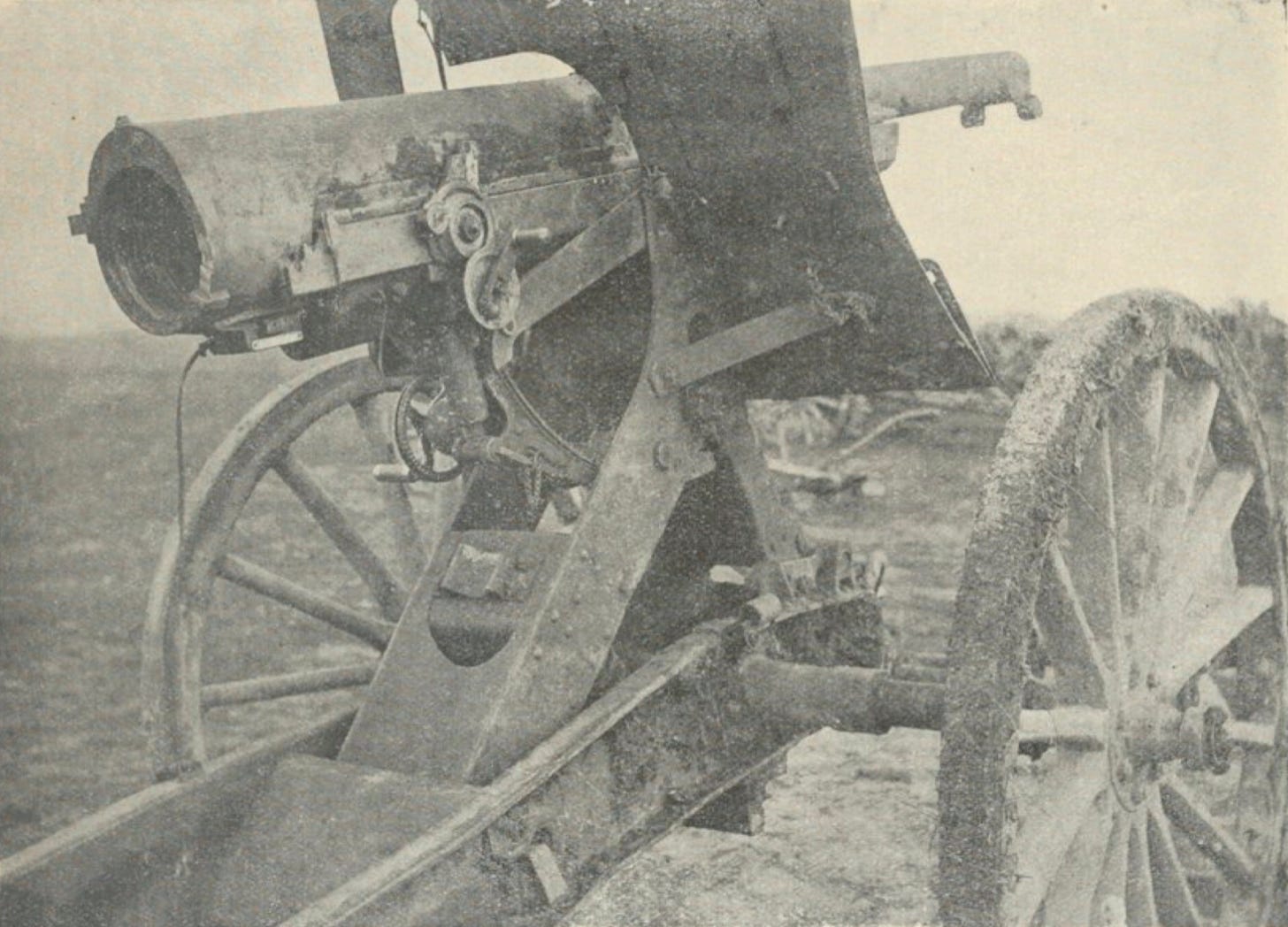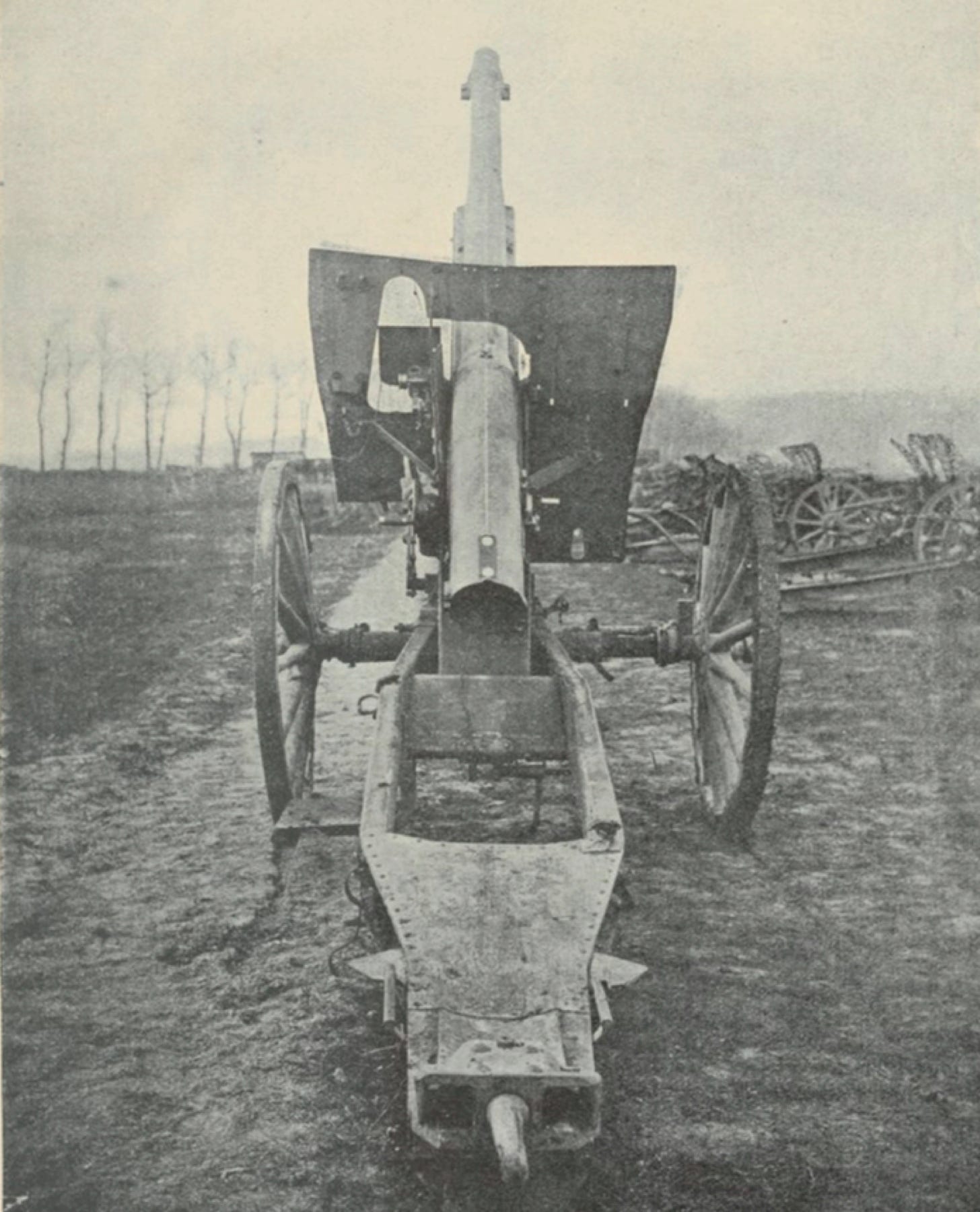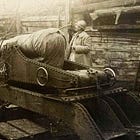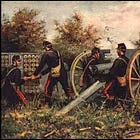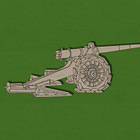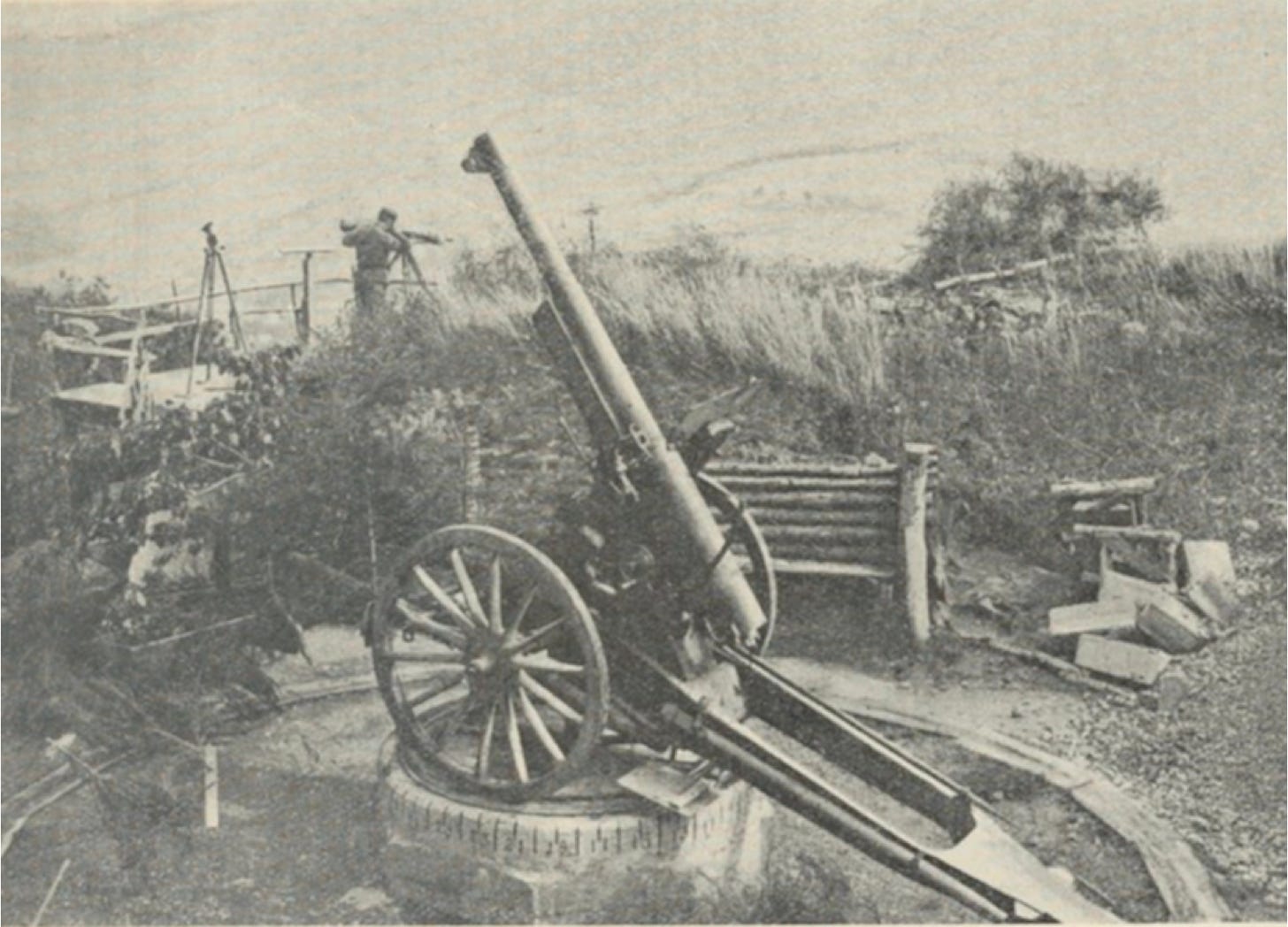
In October of 1917, French forces fighting on the heights above the valley of the Aisne River captured an unusual artillery piece. Created by mounting elements of a French 75mm field gun on the carriage of a German 105mm howitzer, this weapon had clearly been designed for two very different modes of employment. That is, while it had been optimized for use as an anti-aircraft gun, it could also serve as a field piece.
The German engineers who built this dual-purpose weapon connected the French-built parts of the weapon to the German-made carriage by means of an adjustable support that allowed the barrel to be raised by as much as 60 degrees. (The barrel of the Model 1897 French field gun was limited to elevations of 18 degrees or less.)
The French gunner who wrote a report on the captured piece referred to the support as the ‘little carriage’ [petit affût]. However, unlike the parts of the two howitzers adopted by the French Army in 1890 that bore the same name, this device did little to absorb recoil. Rather, recoil absorbing mechanism taken from the French field gun performed the lion’s share of that task.
The aforementioned engineers reduced the strain on the French-built recoil system by modifying the barrel, chamber, and breach mechanism to accommodate standard German field gun ammunition. (German 77mm shells were somewhat lighter than the shrapnel projectiles fired by French field guns. German field gun cartridges also carried less in the way of propellant than their French counterparts.)
When they employed the dual-purpose piece as an anti-aircraft gun, the Germans provided it with a special platform. This allowed the piece to be rotated around a single point and, as a result, follow (or, to be more precise, lead) an aircraft in flight. The platform also permitted the barrel to be raised by an additional 15 degrees.
Source: Artillery Intelligence Bulletin [Bulletin de Renseignements de l’Artillerie] No 4 (January 1918) pages 89-92
For Further Reading:
To Support, Share, or Subscribe:





